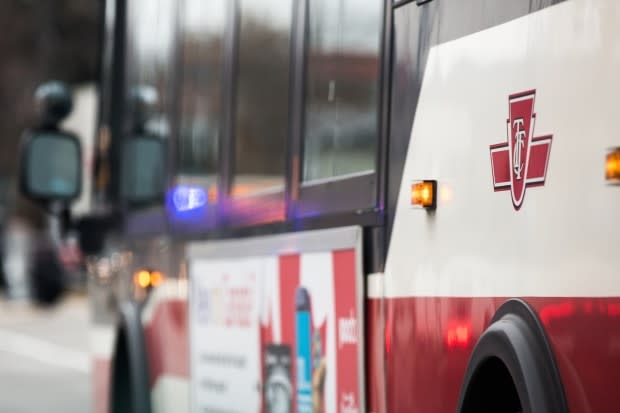TTC 'transit priority' plan could give buses exclusive lanes on 5 major roads
The TTC wants to convert five major Toronto roadways into transit corridors — a bit like what now exists on King Street downtown — in a bid to move more people, quickly.
The transit agency said in a report it will study this proposal over the next five years. The phrase to keep an eye on: "transit priority."
The changes on King Street were controversial, but after a year council voted to make the pilot project permanent after finding it shortened travel times for transit users while increasing ridership on the route.
Here are the bus routes the TTC is now eyeing up for priority treatment:
Eglinton Avenue East
Dufferin Street
Jane Street
Steeles Avenue West
Finch Avenue East
Some of those routes — like Finch — are supposed to get light rail lines in the future.
But before you start envisioning bus-only lanes, you should realize the TTC could just resort to other measures like stop consolidation or all-door boarding.

"Although our focus will be on these major corridors to start, we will continue to identify opportunities on other busy corridors to improve travel time and reliability for customers," the TTC report states.
One stunning fact: The TTC says it operates 13 out of the 24 bus corridors in Canada and the U.S. that carry more than 30,000 people per day.
Dedicated bus routes are nothing new for Ontario cities, although some have had more success than others. Here's a look at what's happening across the province.
Mississauga and the 905
Mississauga has an 18-kilometre transitway that runs east-west across the city and features 12 stops for buses.
Built in 2014, the transitway is the first of its kind in the GTA and also connects with GO stations. Operator MiWay credits it with boosting transit ridership in Mississauga and said some 5.1 million people used it in 2019.
Brampton, meanwhile, is looking at setting up bus rapid transit on Queen Street-Highway 7 in the coming years. In York Region, Viva buses use dedicated lanes and specialized right-turn lanes to get around.
Hamilton
The City of Hamilton experimented with a bus lane running across its downtown core, but abandoned the project in 2015 — even paying $100,000 to get rid of infrastructure it had put in to serve the pilot.
A report found the majority of bus riders liked the lane, but businesses along King Street didn't.
The city is now working toward building a light rail, instead.
Ottawa
Canada's capital has had a dedicated bus transitway since 1983, which includes roads solely used by OC Transpo buses and emergency vehicles.
That network serves a large portion Ottawa's ridership. In the first four months of the year, 34.5 million used the system.
What are Toronto's next steps?
The new proposal for prioritizing bus service is included in this report that's going to the TTC board on Dec. 12. If approved, staff will begin studying the routes.
If the TTC decides to push ahead with the plans, its next hurdle will be getting city council onside.
What do you think of the plan? Do you rely on any of the routes that could get transit priority?
Let us know in the comments or on our social channels.

